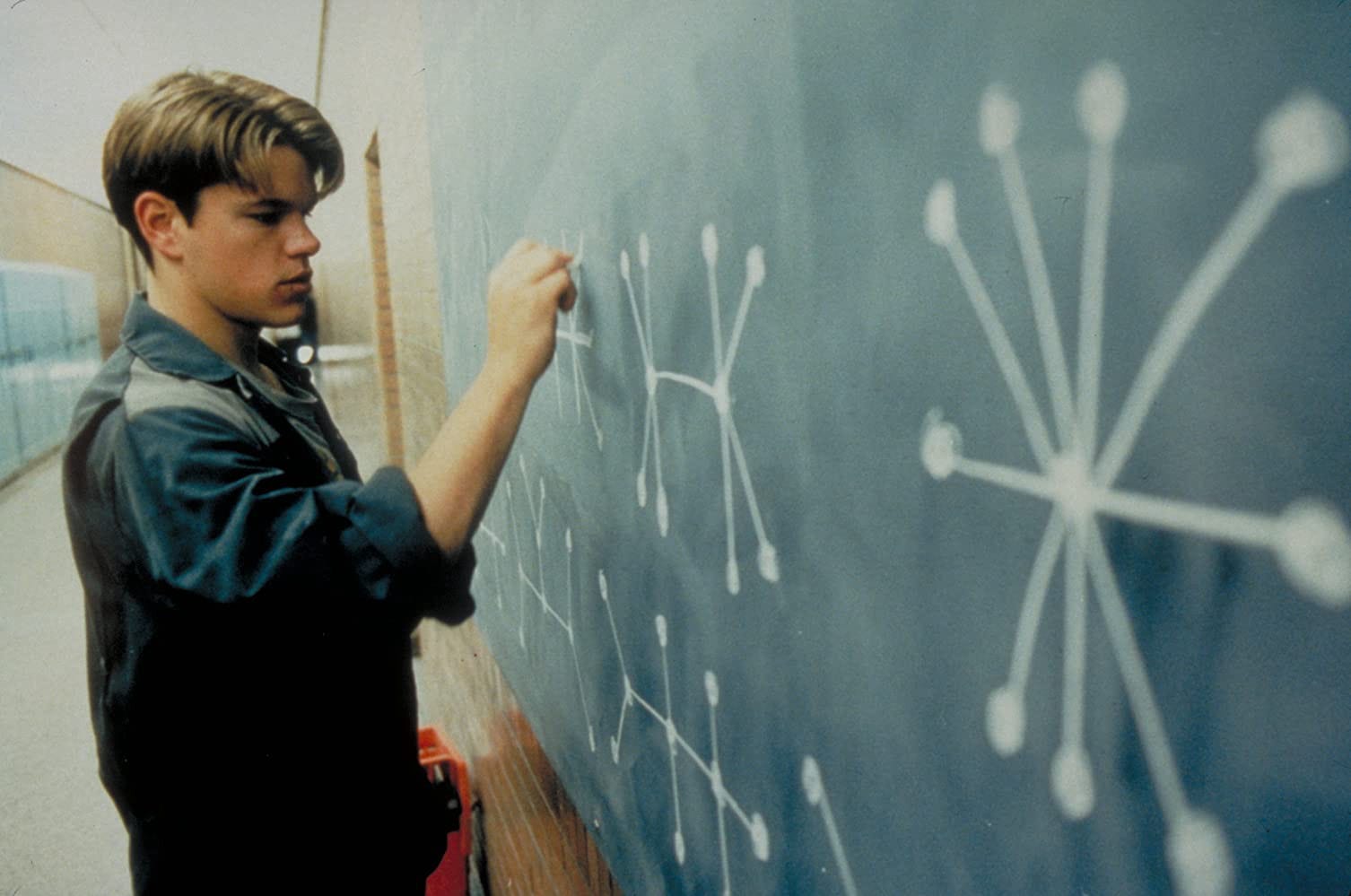Fresh off getting certified, its easy to get stuck in the tornado that is misinformation and misdirection. I mean, I remember it. I started as a trainer at Werblin Gym at Rutgers University and ultimately got my start in commercial gyms at Gold’s Gym.
Starting as a trainer is a unique experience I would only describe as a mix of panic and overconfidence. On one hand, you have been working out most of your life and feel like you know your shit.
On the other hand, you have a build a business from scratch by drumming up conversation with strangers asking for their money.
At Gold’s, it was me walking around trying to explain to people why they shouldn’t take the Les Mills Class or the jacked 50 year old guy why I knew the secret to his hypertrophy goals.
A disaster would be a kind way to put it.
Since that time, I have developed and met numerous people who lived the same life I did and this article is a cautionary tale to adjust your focus when it comes to training.
Mistake #1
Trying to Be the Expert on Everything
This is reminiscent of the college graduate who adds loads of job experience when just graduating.
IT’S OKAY, WE KNOW YOU DON’T HAVE EXPERIENCE!
There is nothing wrong with being new to the field or the craft. There is something wrong with trying to stretch yourself beyond the scope of your capabilities.
Not only does the misrepresentation downplay your credibility as a source of information but puts you in a risky position when it comes to actually working with clients.
You don’t have to be a master at Exercise, Nutrition, Recovery, Hip-Hop, Cryptocurrency, etc.
When starting your career its easy to get stuck in the trap of opening yourself up too much. You were probably taught, “Say yes to EVERYTHING”.
That isn’t the best advice as I think it misses a contextual ending to it.
“Say yes to EVERYTHING, until you HAVE TO say no”
Adjustment #1
Be the Expert on Your Client

While you may not be positive on how to train the client with the posterior-lateral hip replacement or the best foods to increase your clients Vitamin A levels, you have an Ace up your sleeve.
No one can know your client as well as you can.
Clients don’t need THE expert. Clients need someone with more direct information in their corner. There is a big difference in that.
Understanding your clients tendencies – from family life to mid-routine habits – you can provide the best possible experience for the person in front of you.
This means you need to be very clear on a few notes:
1 – Let Them Know You Care – Learn about their family, hobbies, job, and everything that bookends the hours around your sessions. Those hours and interests mean everything to that client.
2 – Let Them Know You Are Learning – Make your clients aware when you are continuing your education to better assist them. Also, send them articles and content you come across you feel might resonate with them. You aren’t a trainer, you are a resource of information.
3 – Let Them Know How They Are Doing – Clients want to know if they are doing well or not. Keep them in the loop on their progress in every aspect of their training.
If you can master your interaction with them you will become the most valuable resource they could hope for. Coaching is your superpower.
Mistake #2
Making Sessions too Complicated

I can always tell who the new trainer in the gym is by the level or crazy shit they have their clients doing. It’s a circus.
Clients don’t want to do crazy shit, they want crazy results.
The complexity of what you do as a coach isn’t an indicator or your expertise in the field. It also seems exhausting to try and come up with all of the things in that workout.
Part of coaching is understanding the person coming into your session isn’t the client you see on Instagram or the same as you. Passing off your personal likes onto your clients isn’t going to get them better.
Adjustment #2
Stick to the Six Foundational Movement Patterns

The basics are still around for one main reason – they work.
Building a program for clients can be a tough task when you first start out. To make it smoother, its nice to have a seamless system to make sure every pattern is taken care of.
To better troubleshoot your programming, check out this article on the 6 Step Programming System
This is where focusing on the six foundational movement patterns can push your clients to all new heights because you won’t miss anything.
Almost all exercises will get someone stronger. The details of nitpicking between exercise A and exercise B really isn’t going to be the deciding factor on whether your client sees results or not.
However, it may be the deciding factor whether they feel happy, comfortable, and confident with their exercise routine.
Mistake #3
Only Working DURING the Session

If you are lucky enough, you will have a client training 3-4x per week with you really dedicating themselves to the process.
Only communicating with them during the session is the biggest mistake I see happen.
Trust me, this is an easy hole to get stuck in. This was my existence in the beginning of my career.
“Okay, see you next Wednesday at 10am”
And then, you literally don’t see them until Wednesday. That isn’t right.
We know clients are paying for X amount of sessions for their training but the commitment is rooted in something much deeper than the 60 minutes at a time.
Adjustment #3
Earn Money by the Hour, Earn Commitment By the Week

You may be seeing them one hour at a time but you are earning their commitment with each hour of the day.
Week by week, you slowly build or erode the trust and commitment between each other. And frankly, there should be enough respect to see their time as more than just a nominal transaction.
Clients are investing some hard earned money to work with you and it’s your responsibility to make sure that process goes as well as it can.
It doesn’t mean you need to be texting them endlessly through the night but there should be some checkpoints to make sure you are keeping the communication line open:
1 – Text Before and After – Let your client know how excited you are to see them that day and how well they did in their session.
2 – Check in on Weekends – Like a photo, comment on their Instagram pic, let them know you are thinking about them =.
3 – Send Them Information – Send them articles and content you feel is right for them.
4 – If They Miss – Quickly reschedule, find a new time, keep engagement as high as possible when they miss.
Mistake #4
Certification Hopping
“What should I get next?”
One of the most common questions I get from trainers looking to develop. I totally understand and respect this as well.
I have also met trainers with multiple CPT certifications. Literally ACSM, NASM, NSCA, and ACE CPT certified.
4 of the same certification….
It’s easy to get a certification and quickly want to build into the trainer who is “training professional athletes’ ‘ to quote so many coaches.
There is a lot more that goes into training high level people and high level athletes than simply getting a filing cabinet full of certifications. All those letters at the end of your name may mean a lot to you (as they do to me) but to your clients they don’t mean shit.
So you may get a lot of certifications and letters but now what?
This is a big mistake in the ability to truly learn and understand the education you just received. You just spent a lot of money on a certification and that was for a reason, DO THAT.
Adjustment #4
Every Certification Deserves 6 Months

Spreading out your education allows you time to absorb what you just learned.
I remember I used to have meetings with trainers and they would tell me all the things they can do and how they just learned it in their certification. Aspirations to get the next cert – PPSC, KB’s, Olympic Lifting.
I used to always ask, “What score did you get on the exam?”
“87” they would reply with some confidence and a feeling of accomplishment.
My response was always, “Well, I guess there is 13% of the book you still have to learn”.
I would explain that it wasn’t to be an asshole but to give perspective where perspective is needed.
There was still a major chunk of that foundational knowledge that needed to be tapped into but because you “passed” the certification you were going to discard it.
I encourage trainers while they are absorbing their one cert to take the Will Hunting approach to education – gather all your information on free resources and some late fee’s at the library.
Articles – Find articles that resonate with your training and the things you need to learn. They can be from any source but if I am being bias, we put out some awesome articles here at the PPSC (check them out here)
Podcasts – Listen to podcasts from different realms. Yes, Pain-Free Performance Podcast but also dabble with some neurological stuff (Huberman Lab) or maybe you want to dive into research some (Stronger By Science).
Volunteer – Giving your time is one of the best ways to develop. Don’t be shy to ask if you can hang out during sessions to observe. I have 16 years in and I STILL do it all the time.
Closing Thoughts
Don’t get caught up in trying to be a full fledged rockstar overnight. It takes time!
In the same way you hear about these people that became an “overnight success”.
I can assure you that you are not seeing the decades of work prior to that moment in time.
Take your time learning and focus on being the best version of yourself in that moment. Your clients are depending on you to bring the best program possible for them – so do that.
As you develop over time, you will one day wake up and realize that education doesn’t stop.




